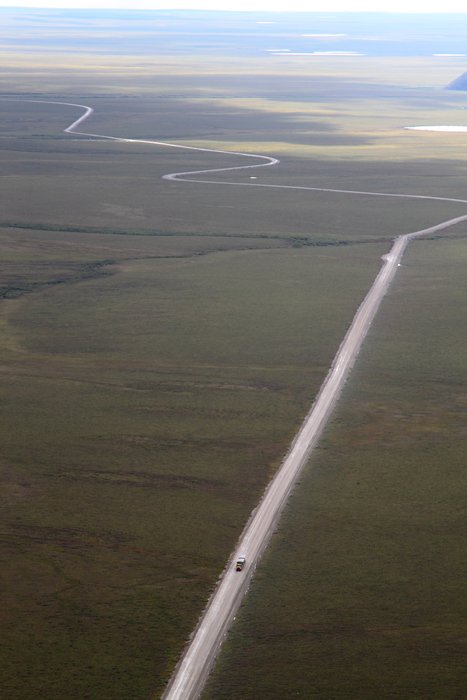Infrastructure in Alaska
Last modified: 12th August 2019

Infrastructure Articles
At 663,000 square miles, Alaska is by far both the largest and least densely populated state in the U.S. The majority of the population and infrastructure is concentrated around Anchorage, the largest city, and along the “Railbelt” extending between Seward and Fairbanks. Large areas of the state are not connected to the road system, and transportation in these areas is primarily by boat or small plane.
Many of Alaska’s natural resources lie in these remote areas. The development of infrastructure in these areas is one of the major economic costs and logistical challenges faced by proposed resource-extraction projects. Additionally, the extreme climate makes the development and maintenance of infrastructure in Alaska difficult. These constraints apply to everything from roads to ports to electrical grids.

Investments in infrastructure such as a new road can provide access and interconnectivity for remote communities. This can greatly reduce prices for fuel, construction materials, food, and other basic necessities. However, this improved access may also threaten the subsistence lifestyle of people in these areas. In some cases, rural residents support these road projects (e.g. Cold Bay/King Cove), while in other cases, road proposals may be opposed by the communities affected (e.g. the Road to Umiat). Expensive road and bridge proposals to connect remote and sparsely populated areas of the state have been heavily criticized as “Bridges/Roads to Nowhere”.
Infrastructure development in remote areas of Alaska is associated with very high costs. There is additional concern about the uncertain impact of climate change. Climate change in Alaska could provide both opportunities (e.g. Arctic ports) and challenges (e.g. melting permafrost and eroding coasts to the detriment of roads and pipelines).
Expanding access to natural resources is the driving force behind most infrastructure proposals and developments in the state. Alaska possesses large amounts of natural resources, including coal and metals, which are found in regions far from roads, railways, or ports. Current hot topics include a proposed gas line from the North Slope, “Roads to Resources” such as the ones to Umiat or to Ambler, the construction of facilities to power large mines such as Donlin Gold and Pebble, and the expansion of Port MacKenzie. Whether or not these projects should or will go forward will be an issue of contention among many competing interests in Alaska and nationwide for the foreseeable future.
Created: Jan. 19, 2018